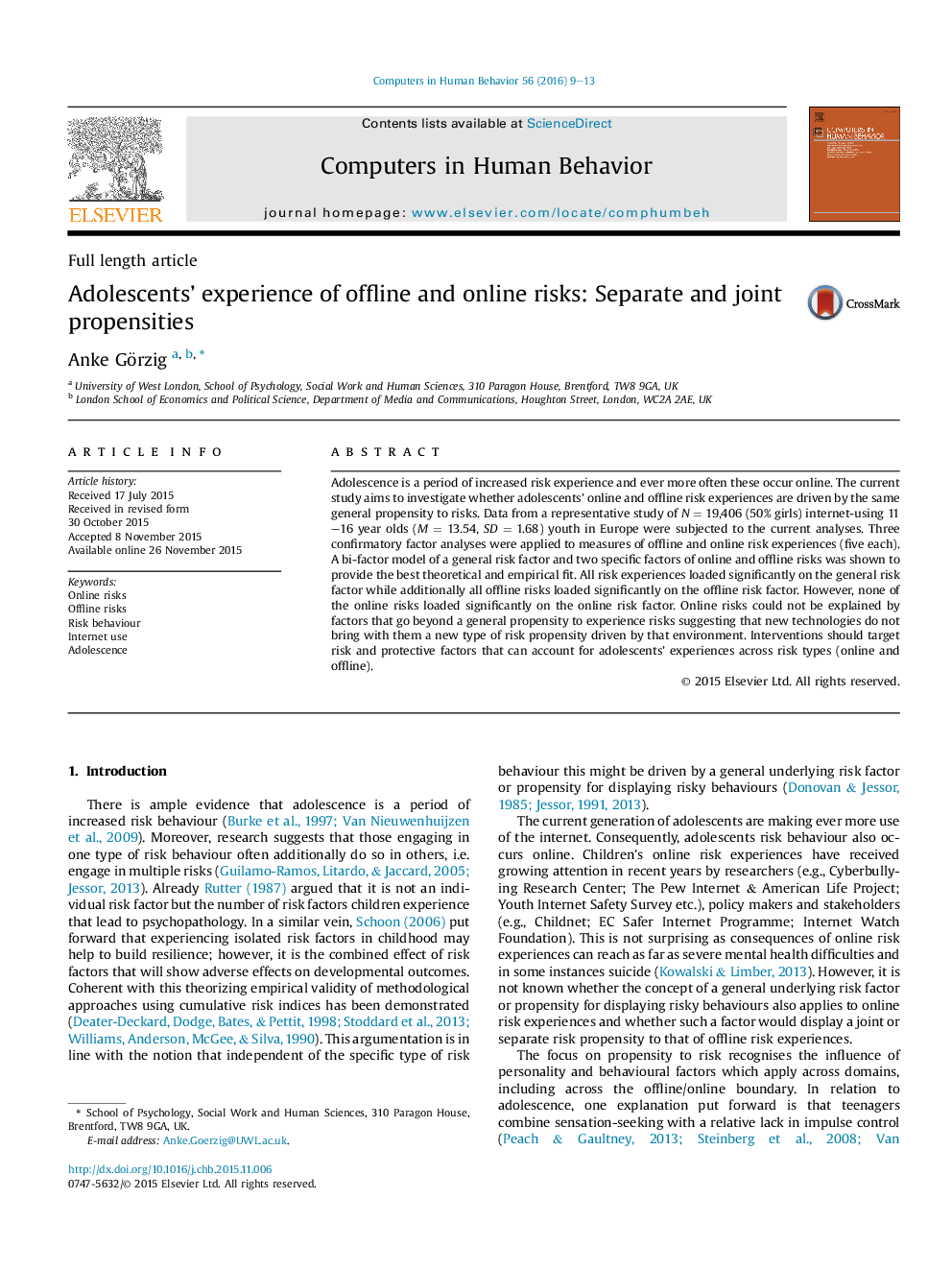| Article ID | Journal | Published Year | Pages | File Type |
|---|---|---|---|---|
| 6837616 | Computers in Human Behavior | 2016 | 5 Pages |
Abstract
Adolescence is a period of increased risk experience and ever more often these occur online. The current study aims to investigate whether adolescents' online and offline risk experiences are driven by the same general propensity to risks. Data from a representative study of NÂ =Â 19,406 (50% girls) internet-using 11-16 year olds (MÂ =Â 13.54, SDÂ =Â 1.68) youth in Europe were subjected to the current analyses. Three confirmatory factor analyses were applied to measures of offline and online risk experiences (five each). A bi-factor model of a general risk factor and two specific factors of online and offline risks was shown to provide the best theoretical and empirical fit. All risk experiences loaded significantly on the general risk factor while additionally all offline risks loaded significantly on the offline risk factor. However, none of the online risks loaded significantly on the online risk factor. Online risks could not be explained by factors that go beyond a general propensity to experience risks suggesting that new technologies do not bring with them a new type of risk propensity driven by that environment. Interventions should target risk and protective factors that can account for adolescents' experiences across risk types (online and offline).
Related Topics
Physical Sciences and Engineering
Computer Science
Computer Science Applications
Authors
Anke Görzig,
